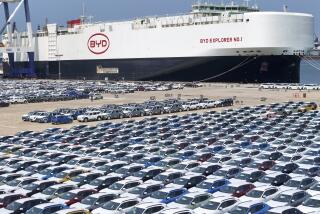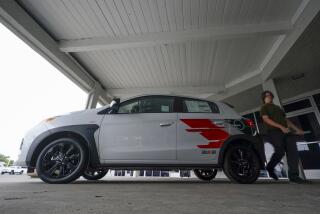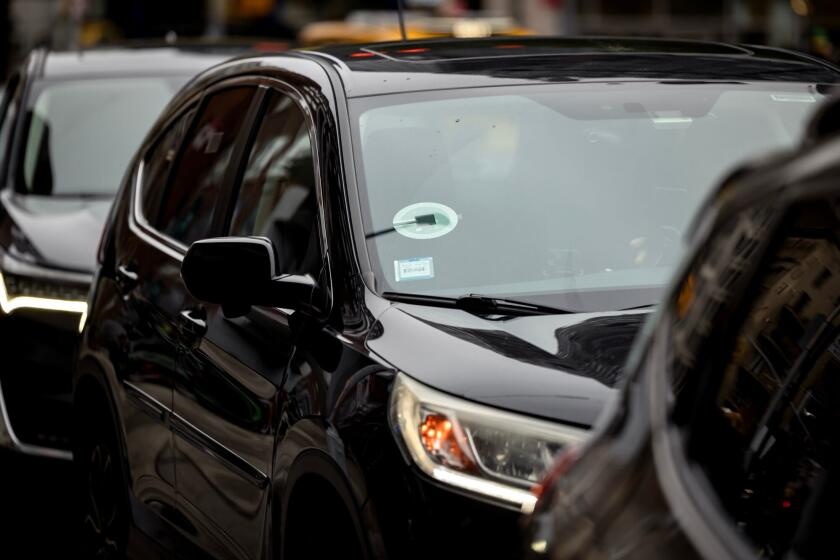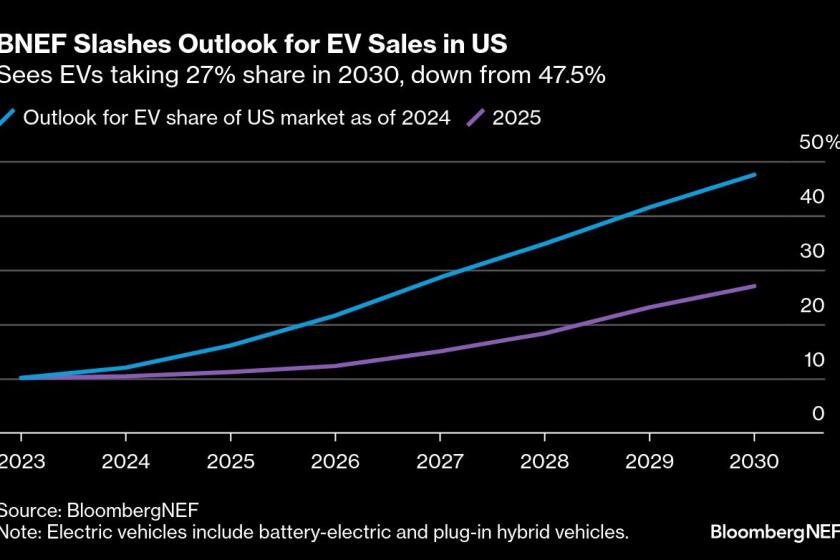World’s cheapest car is starting to enrich Indian automaker
- Share via
The tiny Nano cars made by India’s Tata Motors are starting to hit the road in that country after a land dispute forced the relocation of the car’s manufacturing plant and delayed its launch.
Analysts say the Nano could rock the international auto industry and put millions of new Indian drivers on the road.
Although Tata is producing only about 100 units a day, Tata director Jamshed J. Irani said it hoped to ramp up to about 1,000 vehicles a day next year. Tata has also started building low-cost homes, which the media have labeled Nano homes.
Steven Mufson interviewed Irani last week about the $2,200 basic vehicle, billed as the world’s cheapest car. Here are excerpts of their conversation:
What is your strategy for the Nano?
We’ll be concentrating on India, where quite a few people will buy it as a second or third car. It is a great car for the city, ideal for parking, fuel consumption and safety. No one envisions them zipping along highways. There is no baggage space.
How much interest has there been in India?
We are distributing the cars by lottery. We took a lot of deposits, but [because of the long waiting list] we said those who wanted their money back could get it because even in March 2011, we are not sure they will get the car.
That sounds great for Tata Motors, but people worried about greenhouse gas emissions won’t be happy.
It might even reduce emissions. If I drive my Tata, my Mercedes will be parked. So from an environmental point of view, pollution will be reduced because the consumption of fuel will be much less in the Nano. About 19 to 20 kilometers per liter [equal to about 50 miles a gallon].
What customers are you targeting?
We are looking at the segment between the two-wheeler just now and the cheapest car in India, which is three times the price of the Nano, which costs $2,200. That is the basic model. You can get air conditioning, power steering, with windows going up and down. The model with all the bells and whistles is 170,000 rupees [about $3,740]. Now Tata sells about 250,000 cars a year.
So the Nano could double your sales?
Easily.
Are you looking abroad?
We are testing the waters, but we have no plans to go abroad yet. The Indian market, we think, is inexhaustible. If you take the Indian population, there are 1.3 billion. There are about 3 million cars -- not even 1%. Sometimes they all seem to be in the same place. But in the middle class, there are 300 million people and quite a few will graduate from two-wheelers to four-wheelers. The only restrictive fact is the roads.
What about competition from international carmakers?
For 50 years, India had no competition, whether in cool drinks or airlines or cars. . . . Five or eight years back the Indian market was restructured to allow imported vehicles. Now Japanese and Korean companies are making vehicles in India, not only for the Indian market but also for export. As far as I know, they are far away from a [low-price] prototype.
What does the growth in the Indian economy and Tata’s steel and car businesses mean for climate change on the eve of the Copenhagen summit, where many in the international community hope to agree on emission caps?
We at Tata are aware obviously. We will do the right thing. We will not wait for subsidies. If there is a viable technology, we will go for that.






